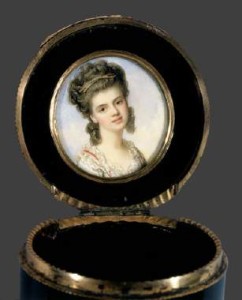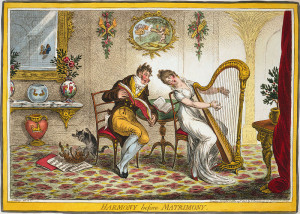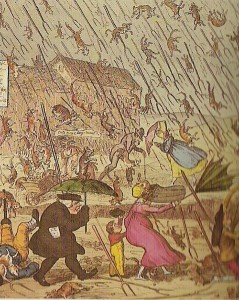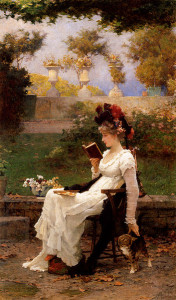Carolyn’s blog about Amazon’s Matchbook program led me to poke around at Amazon and to ultimately look at my Amazon Book Wish List. On Amazon you can make as many wish lists as you like, an easy way to record a “gift registry” for yourself or family members. I use the wish list function to keep track of books that interested me, but that I was not certain I wanted to buy immediately. Or, more accurately, books I was afraid I’d forget.
Here are a few of them.
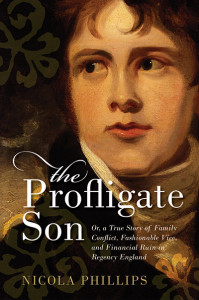 My newest addition to the list was recommended to me by Kristine Hughes (The Writer’s Guide to Everyday Life in Regency and Victorian England from 1811 – 1901 and Number One London blog)–The Profligate Son: Or, A True Story of Family Conflict, Fashionable Vice, and Financial Ruin in Regency Britain. by Nicola Phillips.
My newest addition to the list was recommended to me by Kristine Hughes (The Writer’s Guide to Everyday Life in Regency and Victorian England from 1811 – 1901 and Number One London blog)–The Profligate Son: Or, A True Story of Family Conflict, Fashionable Vice, and Financial Ruin in Regency Britain. by Nicola Phillips.
Booklist says:
“The dangers of a profligate son is a persistent theme in eighteenth- and nineteenth-century British literature, and it was also a very real fear among the upper echelon of British families…an absorbing case study…Phillips eloquently fills out the bare bones of the known facts of the story.”
How can any of us resist that story?
Next on my wish list are two books with the same title but different authors–Wellington: The Iron Duke, first by Phillip J. Haythornwaite; second by Richard Holmes. I’m hoping to go on Kristine and Vicky Hinshaw’s Wellington tour next year and it has been years since I read a Wellington biography.
 There are several books on my list that I own in hardback or paperback, but that I’d love to have on my Kindle for convenience. I can’t quite justify spending the money to buy books I already own, but I’m hoping someone in the family will see them and buy them for me as a gift. One of my favorites is Redcoat: The British Soldier in the Age of Horse and Musket, again by Richard Holmes. This book gives so much information about the British army in the Napoleonic War, it is a treasure. Other books I already own are: Wellington’s Rifles by Mark Urban, What Jane Austen Ate and Charles Dickens Knew: From Fox Hunting to Whist-the Facts of Daily Life in Nineteenth-Century England by Daniel Pool, Every Man Will Do His Duty: An Anthology of Firsthand Accounts from the Age of Nelson 1793-1815 by John B. Hattendorf and Dean King.
There are several books on my list that I own in hardback or paperback, but that I’d love to have on my Kindle for convenience. I can’t quite justify spending the money to buy books I already own, but I’m hoping someone in the family will see them and buy them for me as a gift. One of my favorites is Redcoat: The British Soldier in the Age of Horse and Musket, again by Richard Holmes. This book gives so much information about the British army in the Napoleonic War, it is a treasure. Other books I already own are: Wellington’s Rifles by Mark Urban, What Jane Austen Ate and Charles Dickens Knew: From Fox Hunting to Whist-the Facts of Daily Life in Nineteenth-Century England by Daniel Pool, Every Man Will Do His Duty: An Anthology of Firsthand Accounts from the Age of Nelson 1793-1815 by John B. Hattendorf and Dean King.
 Two more books on the list: The Black Count: Glory, Revolution, Betrayal, and the Real Count of Monte Cristo by Tom Reiss. This book won the Pulitzer Prize for Biography and sounds fascinating. As does A Scandalous Life: The Biography of Jane Digby by Mary S. Lovell. In 1828 Jane Digby left her aristocratic husband and young son for an Austrian diplomat. A sensational divorce resulted and Digby left England for the continent, marrying two more times, but leaving those husbands and more children, as well, until she ultimately found happiness marrying a sheik twenty years younger than she. If her story were fiction, it would be too far-fetched.
Two more books on the list: The Black Count: Glory, Revolution, Betrayal, and the Real Count of Monte Cristo by Tom Reiss. This book won the Pulitzer Prize for Biography and sounds fascinating. As does A Scandalous Life: The Biography of Jane Digby by Mary S. Lovell. In 1828 Jane Digby left her aristocratic husband and young son for an Austrian diplomat. A sensational divorce resulted and Digby left England for the continent, marrying two more times, but leaving those husbands and more children, as well, until she ultimately found happiness marrying a sheik twenty years younger than she. If her story were fiction, it would be too far-fetched.
Do you own any of these books? Are they on your wish list? What books are on your wish list?




